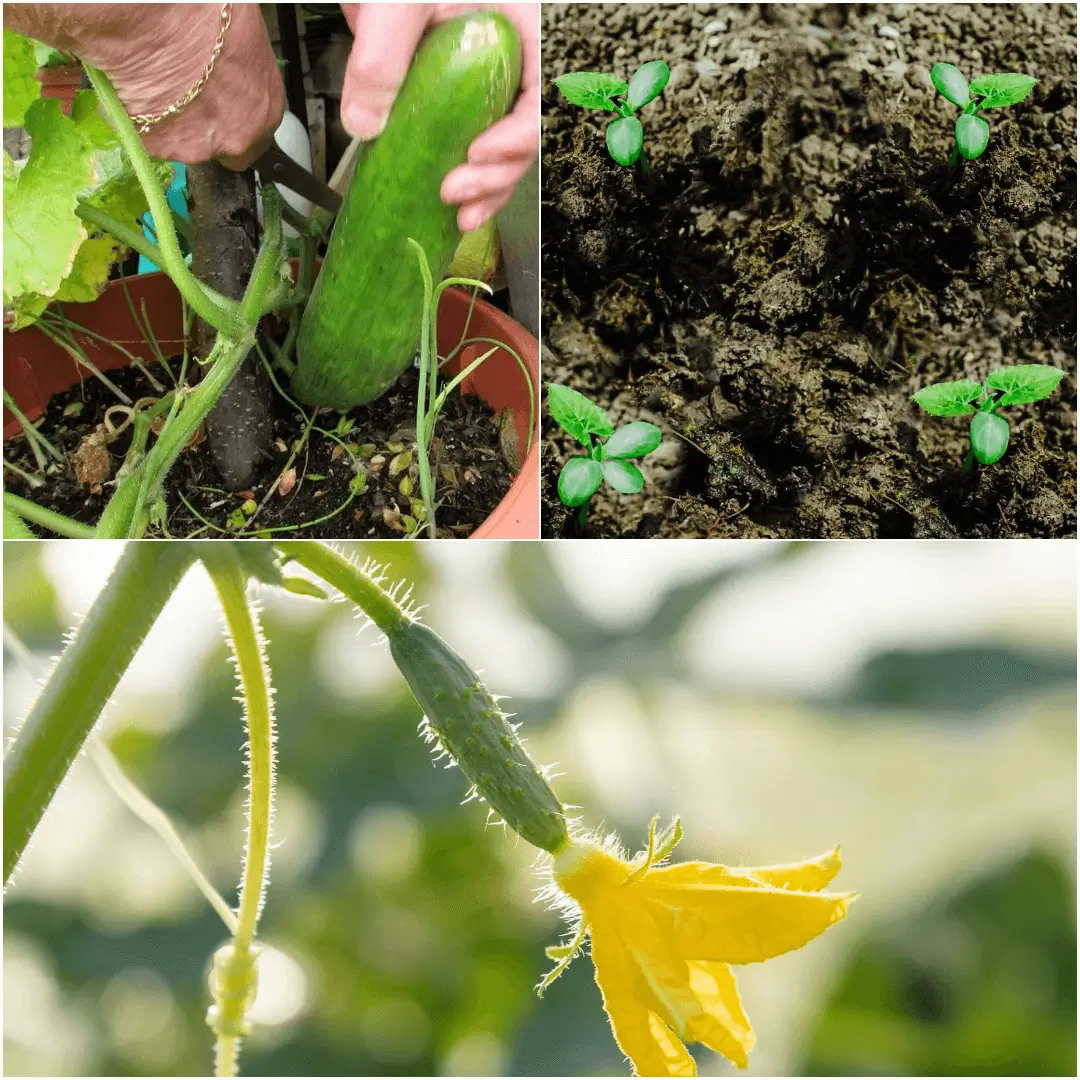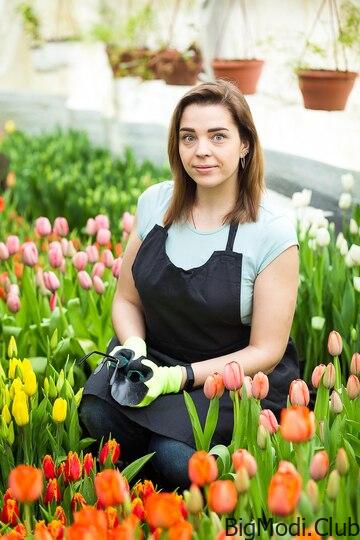Cucumbers are one of those vegetables that seem to scream “summer,” don’t they? Crisp, refreshing, and versatile, cucumbers are perfect for salads, pickles, or just snacking on their own. But how do you grow them successfully in your garden? Don’t worry, I’m going to walk you through the entire process of planting cucumbers—from choosing the right spot to knowing when to harvest.
By the end of this, you’ll be ready to grow your own plants and keep them flourishing all season long. Let’s dive in!
Why Grow Cucumbers in Your Garden?
Why cucumbers, you ask? Besides being delicious and low-maintenance, these plants are fast growers and can yield an impressive amount of fruit. Plus, cucumbers are perfect for both small gardens and larger plots. They don’t take up a lot of space, and with the right support, they can grow vertically.
Nutritional Benefits of Cucumbers
Cucumbers are not just refreshing—they’re healthy too! Packed with vitamins like Vitamin K, potassium, and antioxidants, cucumbers help with hydration and digestion, thanks to their high water content. Think of them as nature’s way of helping you stay cool and healthy during hot summer days!
Best Growing Conditions for Cucumbers
If you want to grow strong, healthy cucumber plants, the growing conditions are crucial. Get this part right, and you’re halfway there.
Light and Temperature
These plants love the sun. They thrive in full sunlight, so find the sunniest spot in your garden. They need at least six to eight hours of direct sunlight a day. As for temperature, these plants prefer the warmth—plant them only when the soil temperature reaches around 65°F (18°C). Too cold, and they might struggle to grow or produce misshapen fruit.
Soil Requirements
The right soil can make or break your cucumber crop. Well-drained, fertile soil with a pH of 6.0 to 7.0 is ideal. If your soil is a bit lacking in nutrients, don’t worry. You can always incorporate organic matter, like compost, to boost it before planting. Performing a soil test is a great way to ensure you’re providing your cucumbers with the best environment.
How to Plant Cucumbers from Seed
Now that we’ve covered the basics, let’s get into the real work—planting those cucumber seeds! Here’s where the fun begins.
When to Plant
Timing is everything. It need warm soil, so wait until the soil temperature reaches 65°F. This typically happens in late spring or early summer, depending on your location. Planting too early in cool soil will stunt the seeds’ growth.
Step-by-Step Planting Instructions
- Prepare the Soil: First, prepare your soil by mixing in compost or an organic fertilizer. This gives the seeds a good nutrient base.
- Sow the Seeds: Plant 4-6 cucumber seeds directly in the garden, spacing them 12-18 inches apart. The seeds should be planted about 1 inch deep.
- Spacing and Rows: If you’re growing more than one row, leave at least 4 feet between each row. This gives the vines plenty of room to spread out.
- Thinning: Once the seeds have sprouted and the plants have emerged, thin them out so you have about two plants per location. This will help reduce overcrowding and ensure each plant has enough space to grow.
Transplanting Cucumbers
If you prefer to start cucumbers indoors, that’s completely fine. Many gardeners find transplanting offers a head start on the growing season.
How to Transplant Cucumbers
- Start Indoors: You can start cucumber seeds indoors 3-4 weeks before the last frost date. Use biodegradable pots to minimize root disturbance when you transplant them outside.
- Transplanting to the Garden: When your transplants are ready to move outside, space them 2 feet apart in rows spaced 4 feet apart. Transplanted plants usually mature around 2 weeks earlier than direct-seeded ones, so it’s a good option if you’re eager for an early harvest!
Soil Preparation for Cucumbers
Healthy soil is the foundation for any good garden, and cucumbers are no exception. Here’s how to make sure your soil is in prime condition.
Fertilizing the Soil
Before planting, perform a soil test to determine its fertility. Based on the results, work in the appropriate amount of fertilizer, focusing on the top 6 inches of soil where the cucumber roots will spread. A balanced organic fertilizer is ideal.
Mulching for Healthier Plants
Mulch can be a game-changer for cucumber plants. It helps retain soil moisture, suppresses weeds, and can even warm up the soil early in the season.
Choosing the Right Mulch
For these plants, black plastic mulch is excellent for warming up the soil, especially in cooler climates. But if you’re growing in a warmer region, opt for organic mulches like grass clippings or straw. Just wait until the soil temperature is above 75°F before applying organic mulches.
Watering and Irrigation Tips
These plants are thirsty plants, but too much or too little water can lead to problems. So, how do you get it just right?
How Much Water Do Cucumbers Need?
Cucumbers prefer deep, infrequent watering rather than shallow, frequent watering. Aim to give them about 1-2 inches of water per week, making sure to water at the base of the plants to avoid getting the leaves wet, which can lead to diseases.
Avoiding Water Stress
Inconsistent watering can cause all sorts of issues, from bitter-tasting cucumbers to misshapen fruit. Make sure your watering is steady and consistent throughout the growing season to keep your cucumbers happy and healthy.
Fertilizing Cucumbers for Optimum Growth
Fertilizing these plants is key to boosting their growth, especially once they start developing vines.
When and How to Fertilize
Once your cucumber plants start to send out runners, side-dress them with nitrogen-rich fertilizer. This extra boost helps support vine and fruit development. You can also continue adding organic fertilizers throughout the season to encourage steady growth.
Supporting Your Cucumber Plants
These plants can grow in a sprawling manner, but providing a support system can help in several ways. It keeps the fruit clean, saves garden space, and makes harvesting easier.
Do Cucumbers Need a Trellis?
A trellis is not mandatory, but it’s definitely recommended! It helps support the vines, reduces disease risk by improving air circulation, and makes harvesting a breeze. A basic A-frame trellis or a vertical garden trellis works great for cucumbers.
Controlling Weeds in Your Cucumber Patch
Weeds can compete with your cucumber plants for nutrients and water, so it’s important to keep them at bay.
How to Keep the Weeds Away
Mulch is your best friend here. In addition to keeping the soil moist, it also helps to suppress weeds. However, if you need to cultivate or weed manually, be careful not to disturb the cucumber roots. A light hand is all you need.
Harvesting Your Cucumbers
After weeks of careful tending, it’s time to enjoy the fruits of your labor. But when exactly are cucumbers ready to harvest?
How to Know When to Harvest
Typically, cucumbers are ready to harvest 5-7 days after flowering. You’ll want to check them daily during this time since cucumbers can grow quickly. Harvest them when they’re about 6-8 inches long for slicing varieties and 3-4 inches for pickling types.
Tips for Harvesting Regularly
Keep in mind that these plants grow fast, and leaving mature fruits on the vine can slow down the plant’s production. Regular harvesting ensures you get a continuous supply of cucumbers throughout the growing season.
Growing cucumbers might seem a bit tricky at first, but once you get the hang of it, it’s incredibly rewarding. Whether you’re starting from seed or transplanting, giving your plants the right conditions will set them up for a successful growing season. From choosing the best spot, ensuring proper watering, and supporting your plants with a trellis, these steps will help you grow a bountiful cucumber crop that you’ll enjoy all summer long.
FAQs:
What is the trick to growing cucumbers?
The trick to growing these plants is providing consistent water, plenty of sunlight, and good soil. A trellis can also help by giving the vines support and improving air circulation around the plants.
How do cucumbers need to be planted?
Cucumbers need to be planted in full sunlight with well-drained, fertile soil. Plant seeds 1 inch deep, spaced 12-18 inches apart, and thin them to two plants per location once they sprout.
Do cucumbers need a trellis?
While cucumbers don’t need a trellis, it’s highly recommended. A trellis helps the plant grow vertically, which keeps the fruit off the ground, reduces disease risk, and makes harvesting easier. It also saves space in your garden.


